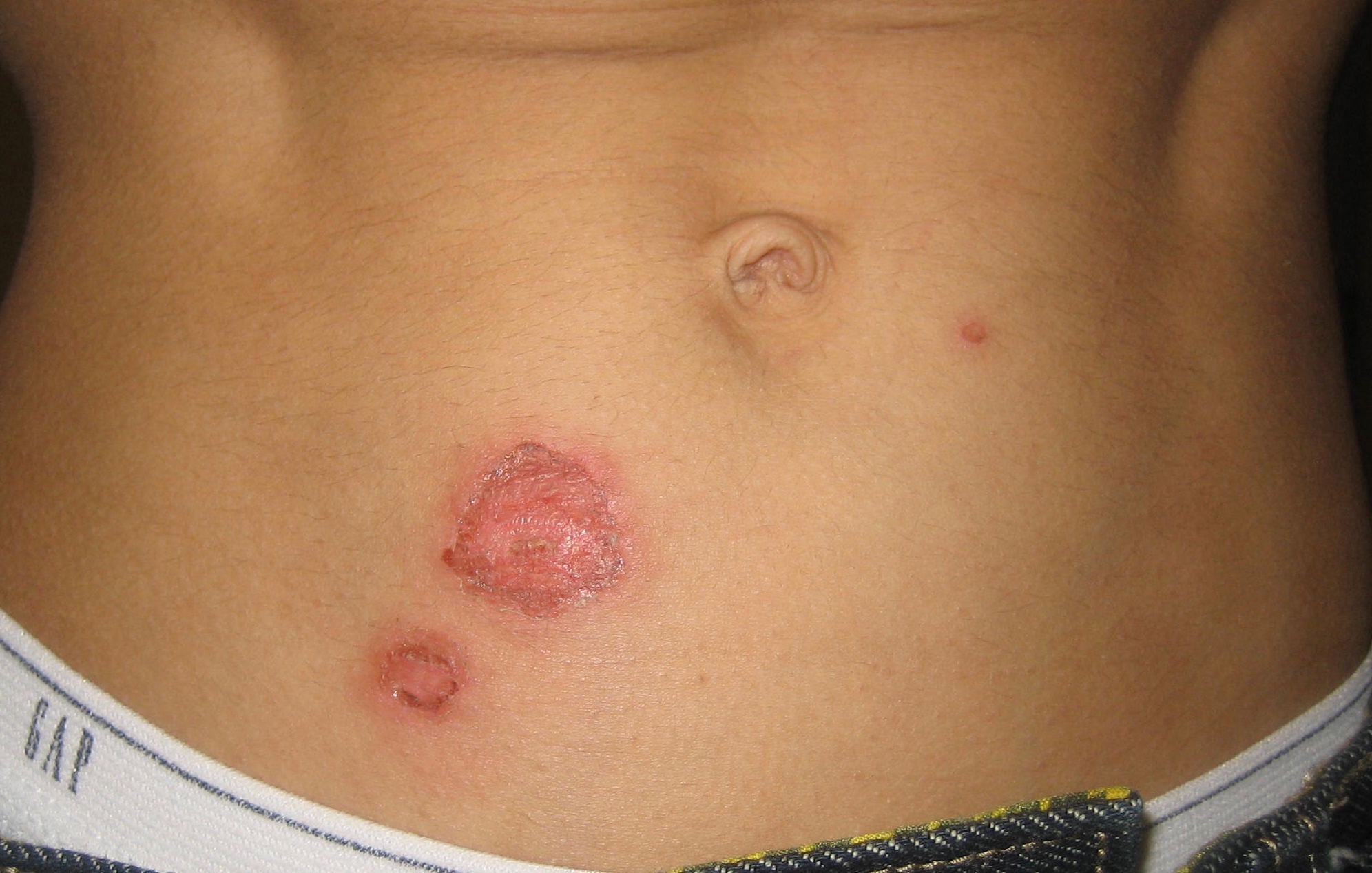Bullous impetigo
Editor-In-Chief: Prab R Tumpati, MD
Obesity, Sleep & Internal medicine
Founder, WikiMD Wellnesspedia &
W8MD medical weight loss NYC and sleep center NYC
| Bullous impetigo | |
|---|---|

| |
| Synonyms | |
| Pronounce | N/A |
| Specialty | N/A |
| Symptoms | Blisters, skin lesions, itching |
| Complications | Cellulitis, sepsis |
| Onset | Infancy, childhood |
| Duration | |
| Types | N/A |
| Causes | Staphylococcus aureus |
| Risks | Poor hygiene, crowded living conditions |
| Diagnosis | Clinical diagnosis, bacterial culture |
| Differential diagnosis | Pemphigus, herpes simplex, contact dermatitis |
| Prevention | Good hygiene, hand washing |
| Treatment | Antibiotics, topical antiseptics |
| Medication | Mupirocin, cephalexin |
| Prognosis | Good with treatment |
| Frequency | Common in children |
| Deaths | N/A |
A bacterial skin infection characterized by large blisters
Bullous impetigo is a bacterial skin infection that primarily affects infants and young children, although it can occur in individuals of any age. It is characterized by the formation of large, fluid-filled blisters, or bullae, on the skin. This condition is a form of impetigo, which is a common and highly contagious skin infection.
Etiology[edit | edit source]
Bullous impetigo is caused by the bacterium Staphylococcus aureus. This bacterium produces a toxin that causes the skin to separate, leading to the formation of blisters. The infection is typically spread through direct contact with the lesions or through contact with contaminated objects.
Clinical Presentation[edit | edit source]
The hallmark of bullous impetigo is the appearance of large, fluid-filled blisters on the skin. These blisters are usually painless but can be itchy. The blisters may rupture, leaving a yellow crust. The lesions are most commonly found on the face, arms, legs, and trunk.
Diagnosis[edit | edit source]
Diagnosis of bullous impetigo is primarily clinical, based on the characteristic appearance of the lesions. A bacterial culture of the fluid from the blisters can be performed to confirm the presence of Staphylococcus aureus.
Treatment[edit | edit source]
Treatment of bullous impetigo involves the use of antibiotics. Topical antibiotics, such as mupirocin, are often effective for localized infections. In more extensive cases, oral antibiotics such as cephalexin or dicloxacillin may be prescribed. It is important to maintain good hygiene and avoid scratching the lesions to prevent the spread of infection.
Complications[edit | edit source]
Complications of bullous impetigo are rare but can include cellulitis, lymphangitis, and sepsis. Prompt treatment with antibiotics usually prevents these complications.
Prevention[edit | edit source]
Preventive measures include maintaining good personal hygiene, avoiding close contact with infected individuals, and keeping wounds clean and covered. In settings such as schools and daycare centers, it is important to disinfect surfaces and objects that may be contaminated.
See also[edit | edit source]
Transform your life with W8MD's budget GLP1 injections from $125
W8MD offers a medical weight loss program NYC and a clinic to lose weight in Philadelphia. Our W8MD's physician supervised medical weight loss centers in NYC provides expert medical guidance, and offers telemedicine options for convenience.
Why choose W8MD?
- Comprehensive care with FDA-approved weight loss medications including:
- loss injections in NYC both generic and brand names:
- weight loss medications including Phentermine, Qsymia, Diethylpropion etc.
- Accept most insurances for visits or discounted self pay cost.
- Generic weight loss injections starting from just $125.00 for the starting dose
- In person weight loss NYC and telemedicine medical weight loss options in New York city available
- Budget GLP1 weight loss injections in NYC starting from $125.00 biweekly with insurance!
Book Your Appointment
Start your NYC weight loss journey today at our NYC medical weight loss, and Philadelphia medical weight loss Call (718)946-5500 for NY and 215 676 2334 for PA
Search WikiMD
Ad.Tired of being Overweight? Try W8MD's NYC physician weight loss.
Semaglutide (Ozempic / Wegovy and Tirzepatide (Mounjaro / Zepbound) available. Call 718 946 5500.
Advertise on WikiMD
|
WikiMD's Wellness Encyclopedia |
| Let Food Be Thy Medicine Medicine Thy Food - Hippocrates |
Translate this page: - East Asian
中文,
日本,
한국어,
South Asian
हिन्दी,
தமிழ்,
తెలుగు,
Urdu,
ಕನ್ನಡ,
Southeast Asian
Indonesian,
Vietnamese,
Thai,
မြန်မာဘာသာ,
বাংলা
European
español,
Deutsch,
français,
Greek,
português do Brasil,
polski,
română,
русский,
Nederlands,
norsk,
svenska,
suomi,
Italian
Middle Eastern & African
عربى,
Turkish,
Persian,
Hebrew,
Afrikaans,
isiZulu,
Kiswahili,
Other
Bulgarian,
Hungarian,
Czech,
Swedish,
മലയാളം,
मराठी,
ਪੰਜਾਬੀ,
ગુજરાતી,
Portuguese,
Ukrainian
Medical Disclaimer: WikiMD is not a substitute for professional medical advice. The information on WikiMD is provided as an information resource only, may be incorrect, outdated or misleading, and is not to be used or relied on for any diagnostic or treatment purposes. Please consult your health care provider before making any healthcare decisions or for guidance about a specific medical condition. WikiMD expressly disclaims responsibility, and shall have no liability, for any damages, loss, injury, or liability whatsoever suffered as a result of your reliance on the information contained in this site. By visiting this site you agree to the foregoing terms and conditions, which may from time to time be changed or supplemented by WikiMD. If you do not agree to the foregoing terms and conditions, you should not enter or use this site. See full disclaimer.
Credits:Most images are courtesy of Wikimedia commons, and templates, categories Wikipedia, licensed under CC BY SA or similar.
Contributors: Prab R. Tumpati, MD






